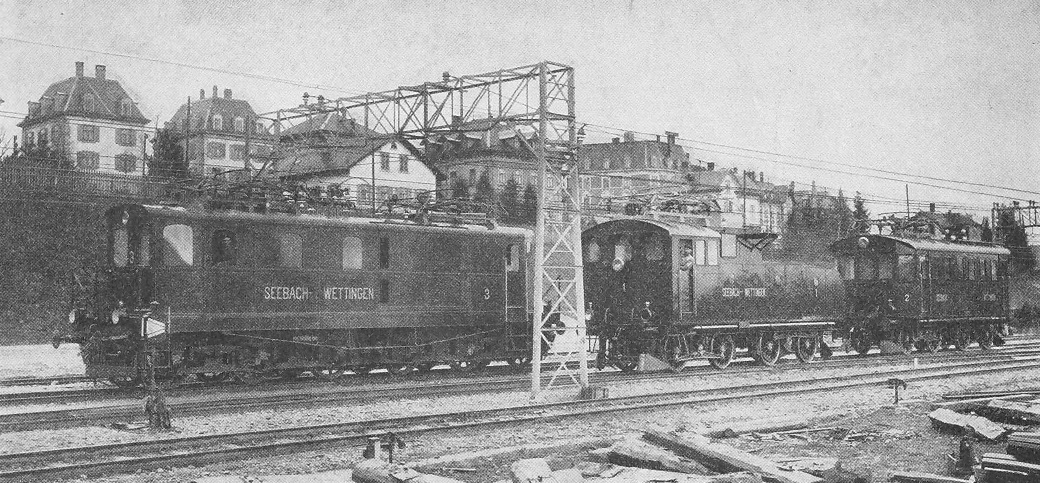|
Swiss National Railway
The Swiss National Railway (German: ''Schweizerische Nationalbahn'', SNB) was a railway company in Switzerland. The Swiss National Railway was created in 1875 from the merger of the two companies, the ''Winterthur–Zofingen Railway'' and the ''Zofingen–Singen–Kreuzlingen Railway''. The Winterthur Democratic Party promoted a railway funded by some communities and cantons to build a railway from Lake Constance to Lake Geneva to compete with the Swiss Northeastern Railway (German: ''Schweizerische Nordostbahn'', NOB). This new line across of the Swiss plateau would have bypassed the major economic centres and run through relatively sparsely populated areas. Unfortunately for the SNB, the established railways managed to gain the right to a new railway line concession in order to prevent it from connecting to Zürich as it had planned. In 1878 financial problems forced the SNB's liquidation, and the NOB took over its bankrupt estate for 12.4% of the face value of its shares. The ci ... [...More Info...] [...Related Items...] OR: [Wikipedia] [Google] [Baidu] |
Etzwilen–Singen Railway
The Etzwilen to Singen railway is a heritage railway between Etzwilen in the Swiss canton of Thurgau and Singen in the German state of Baden-Württemberg, crossing the eastern part of the canton of Schaffhausen. Passenger train services existed between 1875 and 1969, while cargo trains operated the line until 2004. Today, it is used by heritage trains and draisines. History The Etzwilen–Singen railway line was built by the Schweizerische Nationalbahn (SNB) and opened on 17 July 1875, on the same day as the Lake Line sections between and and between and and the Winterthur–Etzwilen railway line between Etzwilen and . The SNB went bankrupt in 1878, and the Etzwilen–Singen railway was subsequently operated by the Schweizerische Nordostbahn (NOB). In 1902, the NOB was subsumed into the Swiss Federal Railways (SBB CFF FFS), which continued passenger train services on the line until 31 May 1969. The line was used for the rolling highway between Lugano and Singen. In 1996, t ... [...More Info...] [...Related Items...] OR: [Wikipedia] [Google] [Baidu] |
Winterthur–Etzwilen Railway Line
The Winterthur–Etzwilen railway line is a railway line in Switzerland. It links Winterthur in the canton of Zurich with Etzwilen in the canton of Thurgau. The line is long, standard gauge, single track and electrified at supplied by overhead line. The line was opened on 17 July 1875 between Winterthur and Etzwilen by the Swiss National Railway (SNB) company. By 1878 the railway company was in bankruptcy, and the line was taken over by the Swiss Northeastern Railway (NOB). Since 1902 the line has been part of the network of the Swiss Federal Railways (SBB). The line was electrified between Oberwinterthur and Etzwilen in 1946, the section from Winterthur Hbf to Oberwinterthur having been electrified since 1928. The principal civil engineering structure on the line is the Thurbrücke Ossingen, a long and high five-span truss bridge over the River Thur. A long two-span prestressed concrete bridge carries the line over the A1 motorway, built in 1967. The line is served th ... [...More Info...] [...Related Items...] OR: [Wikipedia] [Google] [Baidu] |
Maschinenfabrik Oerlikon
Maschinenfabrik Oerlikon was a Swiss engineering company based in the Zürich district of Oerlikon (Zürich), Oerlikon known for the early development of electric locomotives. It was founded in 1876 as the ''Werkzeug- und Maschinen-Fabrik Oerlikon'' by the industrialist Peter Emil Huber-Werdmüller, and occupied a large site immediately to the west of Zürich Oerlikon railway station, Oerlikon railway station. In 1906, the armaments business was demerged to form ', which evolved into the technology company OC Oerlikon and the armaments company Rheinmetall Air Defence (formerly ''Oerlikon Contraves''). In 1967, Maschinenfabrik Oerlikon was taken over by Brown, Boveri & Cie, which merged with ASEA in 1988 to form ABB Group. The site of the company's works has been redeveloped, including the innovative public MFO-Park. In the second decade of the 21st century, a project was initiated to expand Oerlikon railway station, with the provision of two additional platform tracks on n ... [...More Info...] [...Related Items...] OR: [Wikipedia] [Google] [Baidu] |
Electric Locomotive
An electric locomotive is a locomotive powered by electricity from overhead lines, a third rail or on-board energy storage such as a Battery (electricity), battery or a supercapacitor. Locomotives with on-board fuelled prime mover (locomotive), prime movers, such as diesel engines or gas turbines, are classed as Diesel–electric powertrain, diesel–electric or turbine–electric powertrain, gas turbine–electric and not as electric locomotives, because the electric generator/motor combination serves only as a Transmission (mechanics), power transmission system. Electric locomotives benefit from the high efficiency of electric motors, often above 90% (not including the inefficiency of generating the electricity). Additional efficiency can be gained from regenerative braking, which allows kinetic energy to be recovered during braking to put power back on the line. Newer electric locomotives use AC motor-inverter drive systems that provide for regenerative braking. Electric loco ... [...More Info...] [...Related Items...] OR: [Wikipedia] [Google] [Baidu] |
Seebach-Wettingen Railway Electrification Trial
The Seebach-Wettingen railway electrification trial (1905-1909) was an important milestone in the development of Railway electrification system, electric railways. Maschinenfabrik Oerlikon (MFO) demonstrated the suitability of single-phase alternating current at high voltage for long-distance railway operation with the Seebach-Wettingen single-phase alternating current test facility. For this purpose, MFO electrified the 19.45-kilometre-long Swiss Federal Railways (SBB) Wettingen–Effretikon railway, route from Seebach to Wettingen at its own expense with single-phase alternating current at 15,000 volts. Overview By 1900, the use of direct current (DC), usually at 500-600 volts, to supply power to electric trams and trains was well-established. Examples include Trams in Budapest (from 1887) and the Liverpool Overhead Railway (opened 1893). This was satisfactory for urban systems but, for long distance railways, a higher voltage was desirable to reduce energy losses. The 106&n ... [...More Info...] [...Related Items...] OR: [Wikipedia] [Google] [Baidu] |



